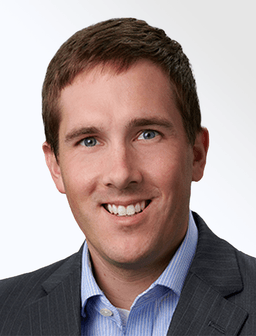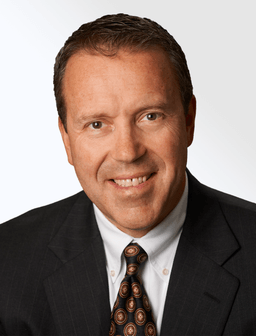
Eight SECURE 2.0 Provisions You Need To Know About in 2024
The Setting Every Community Up for Retirement Enhancement (SECURE) 2.0 Act was enacted in December 2022, introducing over 90 modifications to retirement plan and tax regulations. Many of these changes are not widely known and are designed to be implemented gradually over several years, rather than taking effect immediately.
Here are eight SECURE 2.0 provisions that took effect in 2024:
Pension-Linked Emergency Savings Accounts (PLESAs).
According to a Bankrate survey, more than half of U.S. adults would turn to borrowing when confronted by an emergency expense of $1,000 or more — a figure that has held steady for years. In response, SECURE 2.0 contains provisions related to emergency access to retirement savings, including PLESAs. PLESAs are a financial tool designed to help employees save for emergencies within the framework of their existing retirement plan.
Beginning this year, employers can offer PLESAs linked to employees’ retirement accounts, with the PLESA treated as a Roth, or after-tax, account. Non-highly compensated employees can contribute to their emergency savings account up to a total account balance of $2,500. If the employer provides matching contributions within the plan, it must also match contributions to PLESAs at the same rate as it does for other matching contributions within the plan. Employees can make a tax-free withdrawal at least once per calendar month and the first four withdrawals in a calendar year are not subject to fees.
Employer-provided student loan relief.
Younger employees with large amounts of student debt have sometimes missed out on their employer’s matching contributions to retirement plans. SECURE 2.0 tackles this by allowing employers sponsoring a 401(k), 403(b), governmental 457(b) plan, or SIMPLE IRA to make matching contributions based on employees’ qualified student loan payments. Note that contributions based on student loan payments must be made available to all match-eligible employees.
Section 529 plan rollovers.
Beginning this year, owners of certain 529 plans can transfer unused funds intended for qualified education expenses directly to the plan beneficiary’s Roth IRA without incurring any federal tax or the 10% penalty for nonqualified withdrawals.
A beneficiary’s rollover amount is limited to a lifetime maximum of $35,000, and rollovers are subject to the applicable Roth IRA annual contribution limit. Rollover amounts can’t include contributions made to the plan in the previous five years, and the 529 account must have been maintained for at least 15 years.
Starter 401(k) plans.
SECURE 2.0 creates a new kind of retirement plan for employers not already sponsoring a qualified retirement plan, called a starter 401(k). Employers must automatically enroll all employees at a deferral rate of at least 3% of compensation but no more than 15%. The maximum annual deferral is $6,000 (indexed for inflation), plus the annual IRA catch-up contribution of $1,000 for those age 50 or older. No actual deferral percentage (ADP) or top-heavy testing of the plan is required, reducing the compliance and cost burden for employers.
Employers can impose age and service eligibility requirements, and employees may elect out. Employer contributions aren’t allowed, so less record keeping is required.
Top-heavy rules.
Defined contribution plans that are considered “top-heavy” (plans where key employees hold more than 60% of the plan’s assets) must make nonelective minimum contributions up to 3% of a participant’s compensation. This can represent a significant expense for small employers.
Starting in 2024, employers are no longer required to make the 3% minimum contribution to employees who do not satisfy the Code’s minimum age and service eligibility rules (employees under age 21 and one year of service). The goal is to eliminate the incentive for employers to exclude employees from the plan to avoid the minimum contribution obligation for them.
SIMPLE IRAs.
SECURE 2.0 boosts the annual Savings Incentive Match Plans for Employees (SIMPLE) IRA and SIMPLE 401(k) deferral limit and the catch-up limit by 10% of the 2024 contribution limits (indexed for inflation) for employers with 25 or fewer employees. Employers with 26 to 100 employees can offer these higher deferral limits if they provide a 4% matching contribution or a 3% employer contribution.
Employers now can make additional contributions to each employee in the plan, as well. Additional contributions must be made in a uniform manner and can’t exceed the lesser of up to 10% of compensation or $5,000 (indexed for inflation) per employee.
Early withdrawal exemptions.
SECURE 2.0 expanded the exemptions from the 10% early withdrawal penalty beyond what had historically been limited to in-service withdrawals after age 59 ½. Now participants may also withdraw penalty free from retirement plans in cases of domestic abuse, federally declared disasters, terminal illness, to pay for the premiums of long-term care contracts, and for emergency personal distributions for unforeseeable or immediate needs relating to necessary personal or family emergencies. Note that each new withdrawal exemption has different limits, eligibility criteria, and rules associated with the distribution.
*Important to Note: The early withdrawal penalty exception for terminally ill individuals and those impacted by federally declared disasters took effect in 2023.
Required minimum distributions (RMDs).
Historically Roth IRAs, but not Roth accounts in employer retirement plans have been exempt from pre-death RMD rules. SECURE 2.0 extended the pre-death RMD exemption to Roth accounts in plans so all Roth source funds will be disregarded when calculating a participant’s RMD.
SECURE 2.0 Act Experts
If you’re an employer who still needs to amend your plans due to SECURE 2.0 provisions, connect with a financial advisor at CSH. We have decades of experience helping clients navigate these waters and are intimately knowledgeable of all the enhancements that have come with SECURE 2.0. Our team can assess your current plan and ensure you make the changes necessary to maintain compliance.




